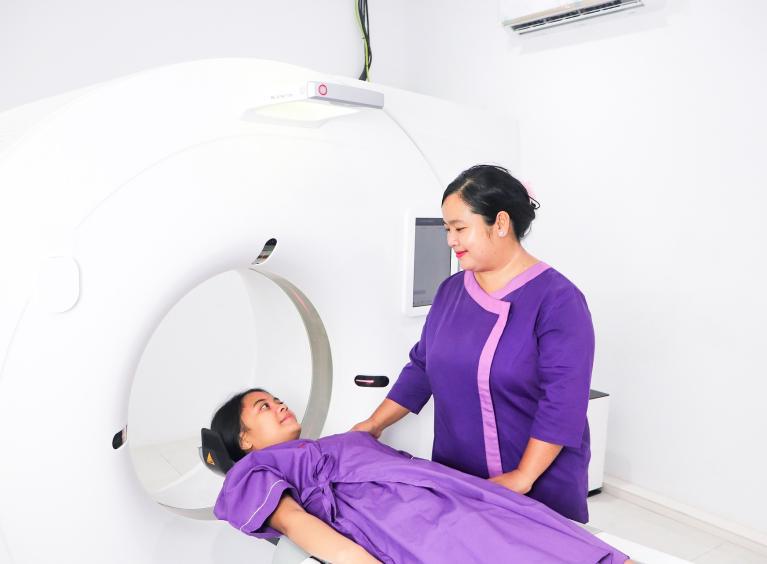Our Emergency Department is very busy right now and some people are experiencing long waits. If you do not require emergency care, please use an alternative such as 111 online.
The scanner is a large “doughnut”-shaped machine and patients will move through this gantry as they lay on the scanner bed. A fan-shaped beam of x-rays are produced from inside the gantry, they pass through the patient’s body and are detected on the other side. This information is then sent to a computer which produces numerous images.
At Barnsley Hospital we have two 64-slice CT scanners.
CT is available 24 hours a day, 365 days a year for emergencies.
Access for our outpatient service is between 8:30am to 7:30pm.

